Authentic Vintage Navajo Sterling Silver Cast Bracelet
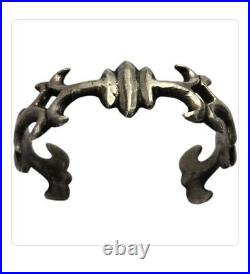
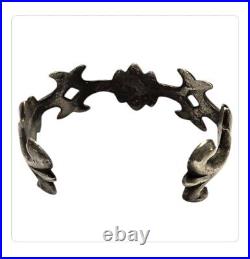
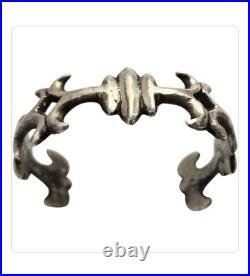
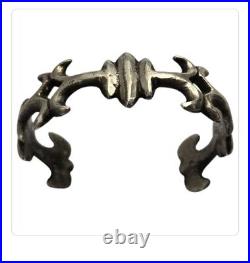
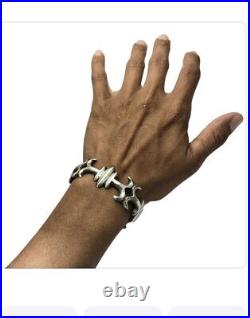


Southwestern Navajo Sand/Tufa Cast Cuff Bracelet. Measures approximately 5"¼ plus1"?
Gap by 22mmwide weight 44.4grs. The coming of the Spanish into what is now New Mexico and Arizona precipitated the beginning of silverwork for the Pueblo Peoples and Navajo.The Spanish taught them to work with molten silver to create jewelry and other items. Before the invention of gas torches, the silversmiths had to melt silver from the embers of a fire left to burn overnight. The silversmith would place silver coins into a crucible, which was placed into the bucket of embers. It would take an hour of fanning the flames to create molten silver.
The silver would then be poured into molds created out of tufa stone and allowed to cool. Modern silversmiths use torches to melt silver. Tufa stone is a soft and porous volcanic stone that can be found in many parts of the world, including the Navajo reservation in Arizona and as far away as Armenia and Western Australia.
Tufa stone makes a perfect mold because it is easy to carve and can withstand high temperatures. The texture of the volcanic rock creates jewelry with a very distinct, sandstone-like finish and texture. However, tufa molds typically only last one to two castings before they become unusable.
The tufa casting process is much the same today as when the Spanish first introduced silver work to the Native American Indians.
